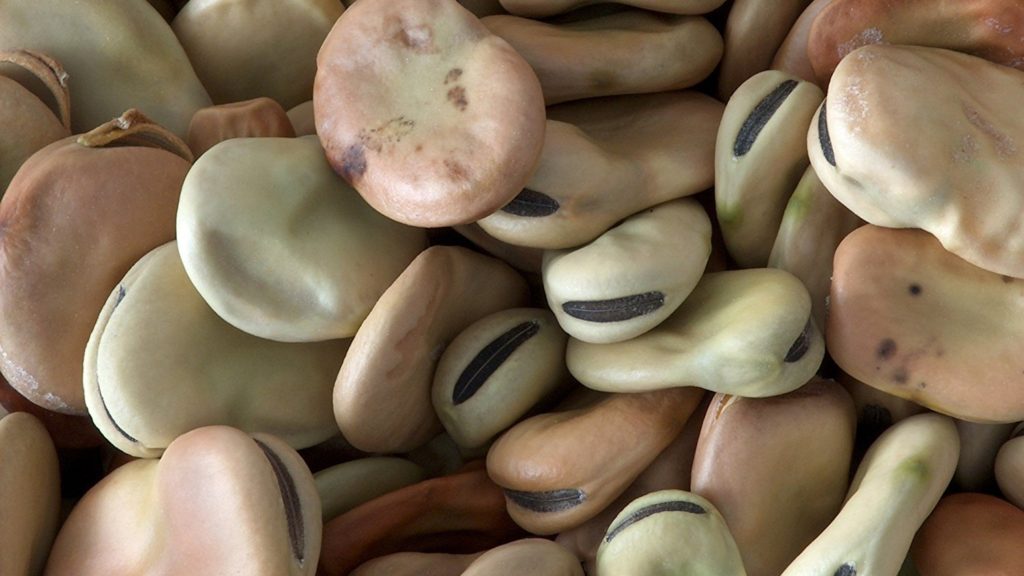For certain vegetables, their preparation is a social activity. Or at least it used to be. Shelling peas or shucking corn used to be done communally by family members or friends sitting on the porch or around the kitchen table. Sure it takes time, and opening a package of frozen corn or peas is more convenient. But in our rush to save time, we’ve lost something, not the least of which is moments spent together in common activity.
I mention this because I want to talk about fava beans. Favas are one of the world’s oldest known cultivated plants. For over 5000 years, they have been a harbinger of spring in many parts of the world. The beans come in long, thick, padded pods, each one containing perhaps 4 or 5 good sized beans.
Preparing fava beans can seem a bit daunting. Not only do you need to shell them, but then you must cook and individually peel them as well. While this may seem like an inordinate amount of work, you could think of it as an opportunity to enlist family or friends in an enjoyable ritual of preparation.
The good news is, your work will be well rewarded. The bright green color and buttery, nutlike flavor of fava beans is a welcome addition to any meal. They can be used as an appetizer: sprinkled with olive oil and herbs and mixed with cubes of cheese as in the recipe below. The beans can also be mashed and spread on bread or crackers, and are delicious in spring vegetable stews or soups.
Fava beans are only available for a few months during late spring and early summer. When buying, look for heavy, shiny pods that haven’t been broken. One pound of unshelled beans yields about one cup of shelled beans, so make sure you get enough for your recipe.
To prepare, remove the beans from their pods, then put them in boiling water for 3 to 5 minutes depending on the size of the bean. Drain and plunge the beans in cold water. Slit and discard the translucent skin surrounding each bean. Your beans are now recipe ready.
One thing you should know about fava beans is that a small percentage of people experience a serious allergic reaction to eating the raw beans. This condition, known as favism, is the result of a genetically transmitted deficiency in a certain blood enzyme. This condition is most common in males of Mediterranean descent. The risk from eating the cooked beans is small.
Here’s a recipe for a salad that can be used as a starter or part of an antipasto spread. This recipe was adapted from Patricia Well’s book Trattoria (William Morrow 1993) and was featured recently on National Public Radio’s website, www.npr.org.
Fresh Fava Beans and Pecorino Cheese
2 pounds fresh unshelled fava beans (about 2 cups shelled beans)
3 tablespoons extra-virgin olive oil
1 tablespoon freshly squeezed lemon juice
1 teaspoon dried leaf oregano
3 tablespoons fresh flat-leaf parsley leaves, snipped with scissors
1/8 teaspoon crushed red peppers (hot red pepper flakes), or to taste 8 ounces soft sheep’s milk cheese such as a pecorino or a soft fresh goat’s milk cheese, cut in small cubes
Salt and freshly ground black pepper to tasteIn a medium bowl, combine all ingredients, and toss to blend. Taste for seasoning. Makes 8 to 12 servings


